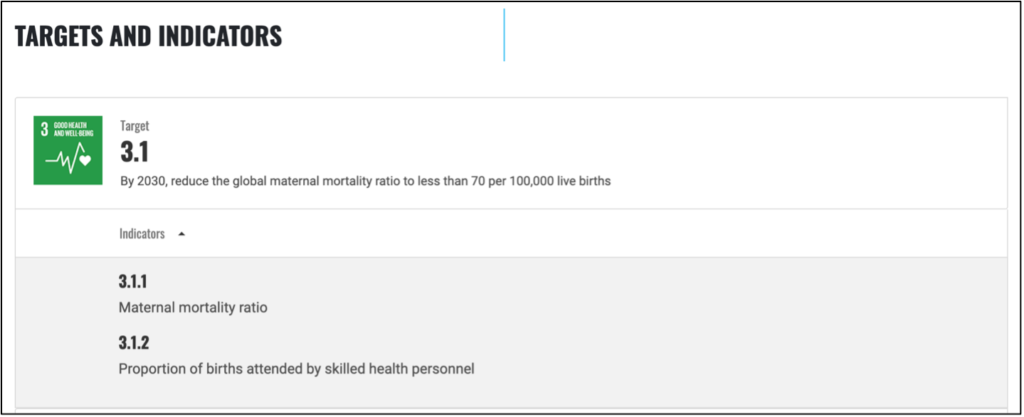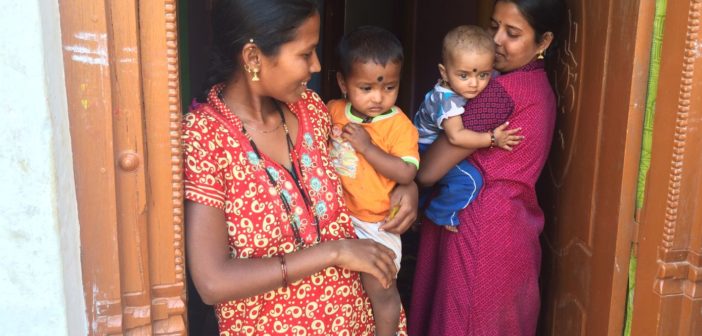Maternal Mortality Ratio (MMR) is a key health indicator used globally to assess outcomes related to pregnancy and childbirth. From 327 in 1999-01, India’s MMR dropped by 233 points to 93 in 2019-21, recording a decrease of more than 70% in 20 years. However, huge disparities exist between states with MMR in many large states far above the national average & SDG target.
Maternal Mortality Ratio (MMR) is a key health indicator used globally to assess outcomes related to pregnancy and childbirth. It is closely monitored by governments and international organisations as part of broader efforts to improve maternal health and strengthen healthcare systems. MMR is also a core component of the Sustainable Development Goals (SDGs), which outline specific benchmarks for improving maternal health outcomes by 2030.
In India, data on MMR is compiled and published by the Office of the Registrar General under the Ministry of Home Affairs, through the Sample Registration System (SRS). The SRS is a nationwide demographic survey that provides annual estimates of fertility and mortality indicators based on a dual-record system involving continuous enumeration and half-yearly surveys. It is considered one of the most reliable sources of data on population health.
Recently, the government released the annual Special Bulletin on Maternal Mortality in India for the period 2019-21. As maternal deaths are considered a rare event, the estimates have been calculated by pooling the data for three years.
Download the comprehensive dataset on the Year and State-wise Maternal Mortality Ratio (MMR) from Dataful.
The World Health Organisation (WHO) defines maternal death as the death of a woman while pregnant or within 42 days of termination of pregnancy, irrespective of the duration and site of the pregnancy, from any cause related to or aggravated by the pregnancy or its management, but not from accidental or incidental causes. The maternal Mortality Ratio (MMR) is defined as the number of maternal deaths during a given time period per 100,000 live births during the same time period.
Significant progress in reducing MMR since independence
As per the Central Government’s Health Survey and Development Committee report of 1946, popularly known as the Bhore Committee report, the MMR in the country was around 20 deaths per thousand live births or 2,000 deaths per 100,000 live births in the mid-1940s before India became an independent country. According to the Health Survey and Planning Committee’s report headed by L Mudaliar, India’s MMR reduced to 10 per thousand live births or 1000 per 100,000 live births in 1959. After nearly three decades, in 1990, India’s MMR was 556. The global MMR at the time was much lower, at 385.
India’s MMR has fallen below 100, achieving the NHP target
From 327 in 1999-01, India’s MMR dropped by 233 points to 93 in 2019-21, recording a decrease of more than 70% in 20 years. In 2018-20, the MMR dropped below 100 for the first time. With this, India has achieved the National Health Policy (NHP)’s target for MMR of less than 100 per lakh live births.
MMR of major states has improved significantly over the last two decades
The MMR bulletin categorises states into three groups to understand the maternal mortality situation in the country better. These are:
- Empowered Action Group (EAG) States and Assam– Bihar, Jharkhand, Madhya Pradesh, Chhattisgarh, Odisha, Rajasthan, Uttar Pradesh, and Uttarakhand, and Assam
- Southern States– Andhra Pradesh, Telangana, Karnataka, Kerala, and Tamil Nadu
- Other States– the remaining 15 States, such asthe Northeastern states, Gujarat, Maharashtra, etc. and the UTs
The report presents data only for major states. The value for smaller states and UTs is clubbed together.
The MMR of the major states reveals that there has been significant improvement in MMR across all the states in the last two decades. This improvement may be attributed to the overall improvement in access to healthcare, such as institutional births, pre-ante-natal care, education, and other factors, which have also improved over the years.
In 1999–2001, Uttar Pradesh and Rajasthan reported the highest MMRs in the country, at 539 and 501, respectively. Over the two decades, Uttar Pradesh reduced its MMR by 388 points to reach 151 in 2019–21, while Rajasthan saw a drop of 399 points, bringing its MMR down to 102. These are among the most significant declines, though both states still report higher than the national average maternal deaths.
Assam’s MMR peaked at 490 in 2001–03 before steadily falling to 167 in 2019–21. Madhya Pradesh reduced its MMR from 407 to 173 in 2014-16, which again increased to 188 in 2015-17. It then reduced to 163 in 2017-19 before increasing to 175 in 2019-21.
Odisha also recorded a 289-point reduction. Other states which recorded a consistent decline include Bihar, bringing down its MMR from 400 to 100. Similarly, Andhra Pradesh reported a reduction of 174 points, Karnataka by more than 200 points, and Tamil Nadu by more than 100 points. Maharashtra’s MMR dropped by 131 points to reach 38.
Among newer states, Telangana showed significant improvement—from 81 in 2014–16 to 45 in 2019–21. Jharkhand and Chhattisgarh also recorded moderate progress, though MMRs remain relatively high.
On the other hand, Haryana, Uttarakhand, and West Bengal, after initial declines, have shown signs of stagnation or mild increases in recent years. All three states had reduced their MMR to below 100 by 2015–17, but have since reported an upward trend, once again crossing the 100 mark by 2018–20.
Some states have already achieved the SDG target
According to the SDG targets, countries that have committed to these targets aim to reduce their Maternal Mortality Ratio (MMR) to less than 70 deaths per lakh live births by 2030. Kerala was the first state to record a two-digit MMR, achieving 95 in 2004–06, followed by Tamil Nadu with 97 in 2007–09. Kerala had already met the SDG target for MMR set for 2030, well before the goals were officially adopted. In the last few years, several other states, including Andhra Pradesh, Gujarat, Jharkhand, Karnataka, Maharashtra, Telangana, and the ‘Others’ category, had also brought their MMR below 100.

Even if India achieves the SDG target, huge disparities across states
India is likely to meet the SDG target of reducing maternal mortality to below 70 deaths per lakh live births before 2030. However, this progress is not evenly distributed. While several states may achieve or come close to the target, others like Assam, Madhya Pradesh, and Uttar Pradesh remain well behind, with MMR levels still far above the national average. These lagging states could take more than a decade to catch up if current trends continue. Moreover, studies show that the COVID-19 pandemic strained health systems, contributing to increased maternal deaths, stillbirths, maternal stress, and complications.
The government is implementing various programs and initiatives, including Janani Suraksha Yojana (JSY), Janani Shishu Suraksha Karyakaram (JSSK), and Pradhan Mantri Surakshit Matritva Abhiyan (PMSMA). These programs focus on promoting institutional deliveries, providing free healthcare services, and improving access to quality care, particularly for vulnerable populations. Real progress will depend on how effectively these programs reach the women who need them most, thereby reducing MMR.



